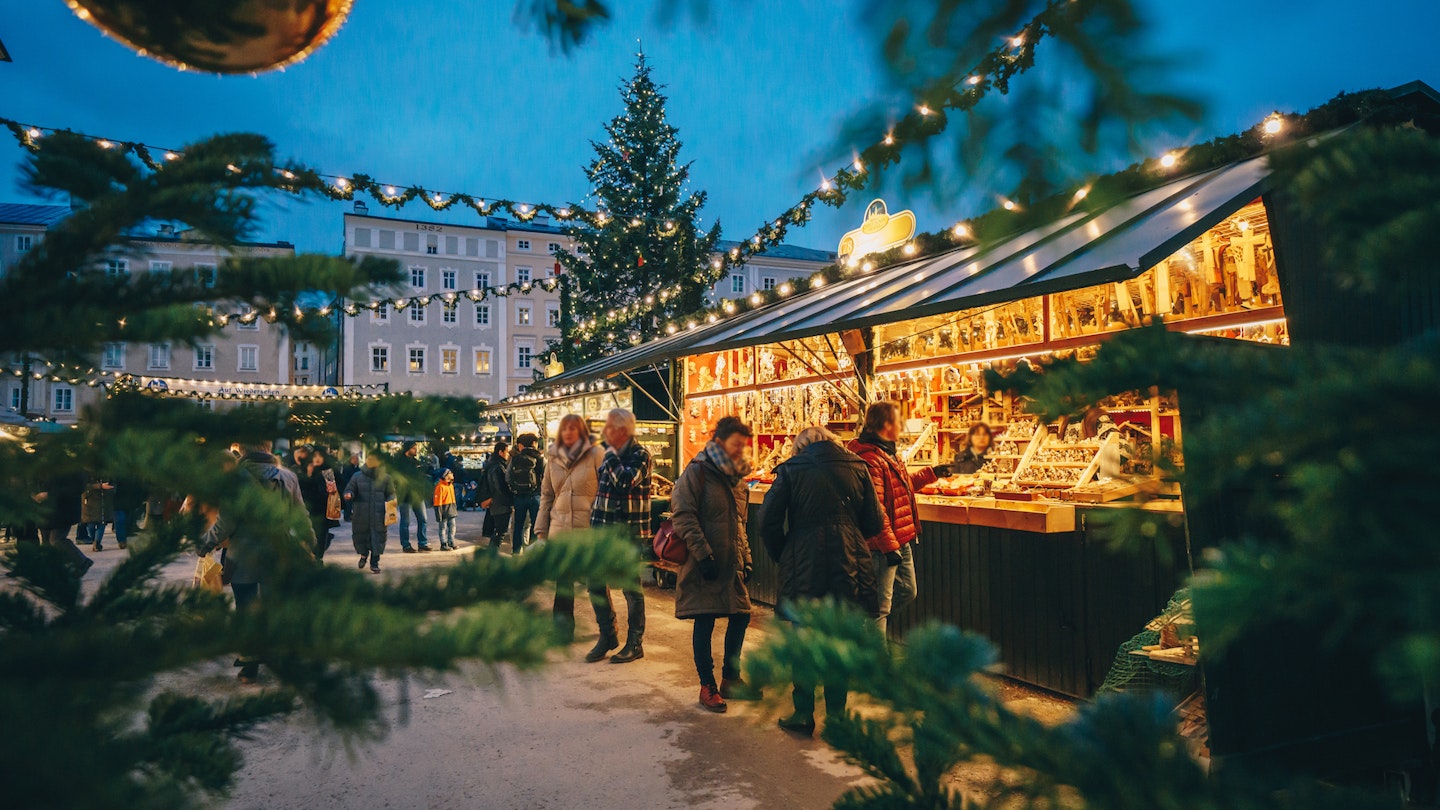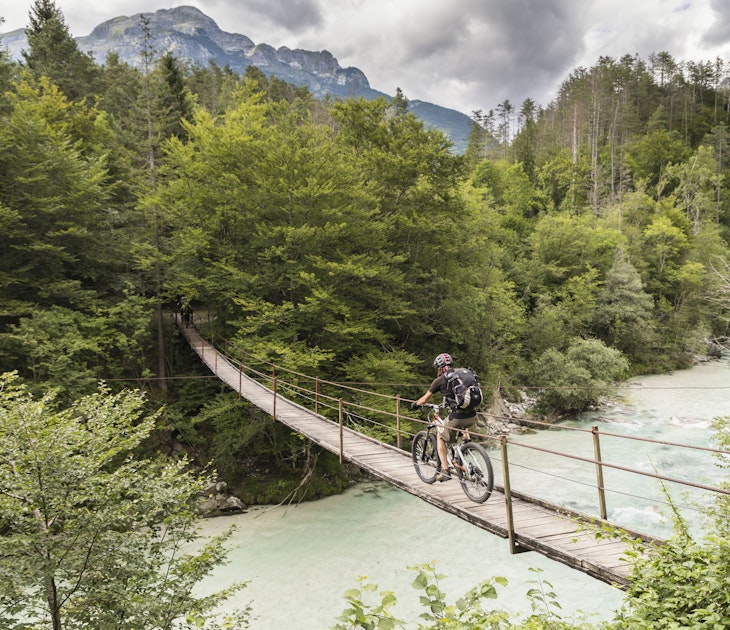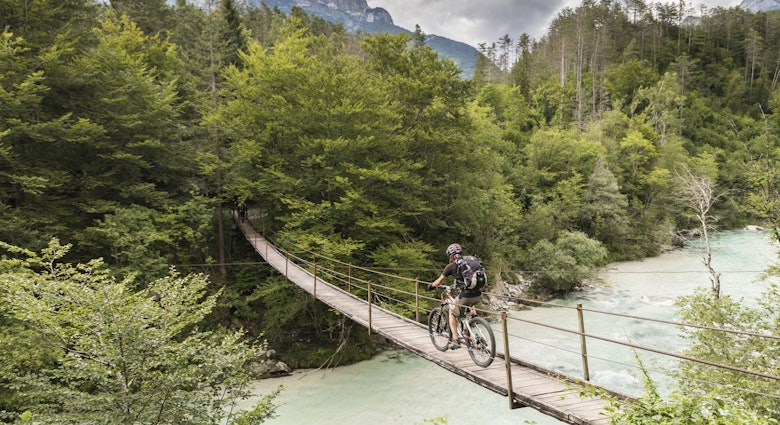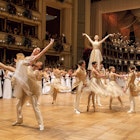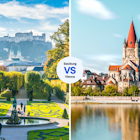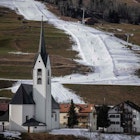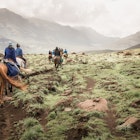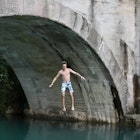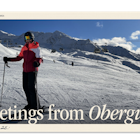Salzburg is a beautiful, vibrant city, a Unesco World Heritage Site with an astonishingly rich cultural heritage.
The birthplace of Mozart, it’s also the gateway to the lovely Salzkammergut region, with its fabulous lakes and mountains. The city also plays host to one of the world’s greatest classical music festivals. While it’s marvelously easy to feel at home here soon after you arrive, familiarizing yourself with the lay of this Alpine land ahead of time will help you make most of your visit.
Accordingly, here are 12 things every Salzburg local knows – and that first-time visitors should, too.
What to do in Salzburg (including in winter, when it rains and at night)
Salzburg has some unmissable museums and sights – Mozart’s Birth House, the DomQuartier (comprising the Cathedral and former Residence of the Prince-Archbishops of Salzburg, with its magnificent state rooms), the Hohensalzburg Fortress and the truly wonderful 17th-century Mirabell Palace and Gardens, to name just a few.
But the real star of the show is the city itself: Salzburg has a beautifully preserved old baroque town center, which simply oozes atmosphere and charm at every corner. So make sure you allow time to just wander down streets like Goldgasse and Getreidegasse, and alongside the River Salzach. If it rains, duck into a cafe to enjoy some seriously good coffee and heavenly cakes, or spend some time in one of Salzburg’s rich museums.
Festivals about in Salzburg – the world-famous Salzburg Festival in July and August, of course, but also Mozart Week (on and around the great composer’s birthday every January), the Easter Festival and the Whitsun Festival, Jazz in the City in October, and the big Christmas market in December. You can also do any number of day trips from Salzburg. Hallstatt and the Eagle’s Nest are two of the most popular, while a slew of other beckon. In particular, the Salzkammergut region has endless lakes to swim in and an almost limitless scope for hiking.
How long should I spend in Salzburg?
Salzburg is a wonderfully interesting and enjoyable city to spend time in at any time of year. We recommend at least three days in town to do it justice and experience it at a relaxed, leisurely pace. Stay a few days longer if you plan to explore the region through day trips.

Is Salzburg expensive?
Salzburg is one of the more expensive cities in Austria, though not more so than many other well-known cities in western Europe, and still considerably less than Paris or London. You can find cheaper but still high-quality accommodation if you look outside the city center. Restaurant prices vary (obviously), yet you can eat very well in Salzburg without breaking the bank.
If you visit outside the high season (July or August, coinciding with the Salzburg Festival) you’ll find accommodation prices decline. Entry tickets to museums and other sights are quite reasonable year-round, and a few free walking tours offer an economical way to get to know the city. Buying a Salzburg Card is generally another good way to save money in Salzburg.
The city center is small and easy to navigate on foot, so there’s no need to fork out on taxi fares; a reliable bus service to and from the airport is quite cheap. When you do need to get a local bus or trolleybus, buying tickets from the machine at the bus stop rather from the driver saves you a bit. Public transport makes popular day trips from Salzburg easy and quite cheap – and don’t forget that children under 6 travel free on trains in Austria, and for half price up to the age of 15.
Open rehearsals by the accomplished music students at Mozarteum University are free to attend. You can also get cheap tickets if you plan ahead. Seats with a slightly restricted view for operas at the Salzburg State Theater cost less than €20 (US$20.80), and in January you can try to book standing tickets for concerts at the Salzburg Festival as soon as reservation requests open.
What to pack for Salzburg
Summer temperatures in Salzburg are pleasantly warm. Shorts, a skirt or summer dress, and short-sleeved shirts or T-shirts are the order of the day between June and the September, when the temperature reaches an average high of around 20–24°C (68–75°F). You might still get some cooler days in the summer, so pack long pants and a lightweight fleece, too.
Having something a little smarter for concerts (including the Salzburg Festival) will help you blend in. When visiting churches, you should not wear clothes that are too revealing. Don’t forget sunscreen, sunglasses and a sun hat, particularly if you’re doing summer hiking.
Definitely bring a refillable water bottle: the tap water is fine to drink, so there’s no need to buy disposable plastic ones. A swimsuit is definitely a good idea in the summer, as Salzburg and the surrounding region offer a huge number of places to swim, from gorgeous lakes to sparkling rivers. Salzburg gets quite a bit of rainfall throughout the year, including in the summer, so you won’t regret bringing a lightweight, packable waterproof jacket or small umbrella. Winters are cold in Salzburg, so pack warm gloves and a hat, a winter jacket and an extra fleece layer. With plenty of snow on the ground in the winter months, warm, waterproof boots are always a good idea. Plus, a good pair of hiking boots will give you the option of doing some winter walks or snowshoeing in the surrounding hills and mountains.
Does Salzburg get snow?
Yes. On the edge of the Alps, winters are cold, snowy – and magical. The first snow typically arrives in November (you can expect it in October in the surrounding mountains), becoming heavier in December and continuing through to the end of March. You might even get some snow as late as April. January and February are the coldest months, with temperatures around or more likely a few degrees below freezing.
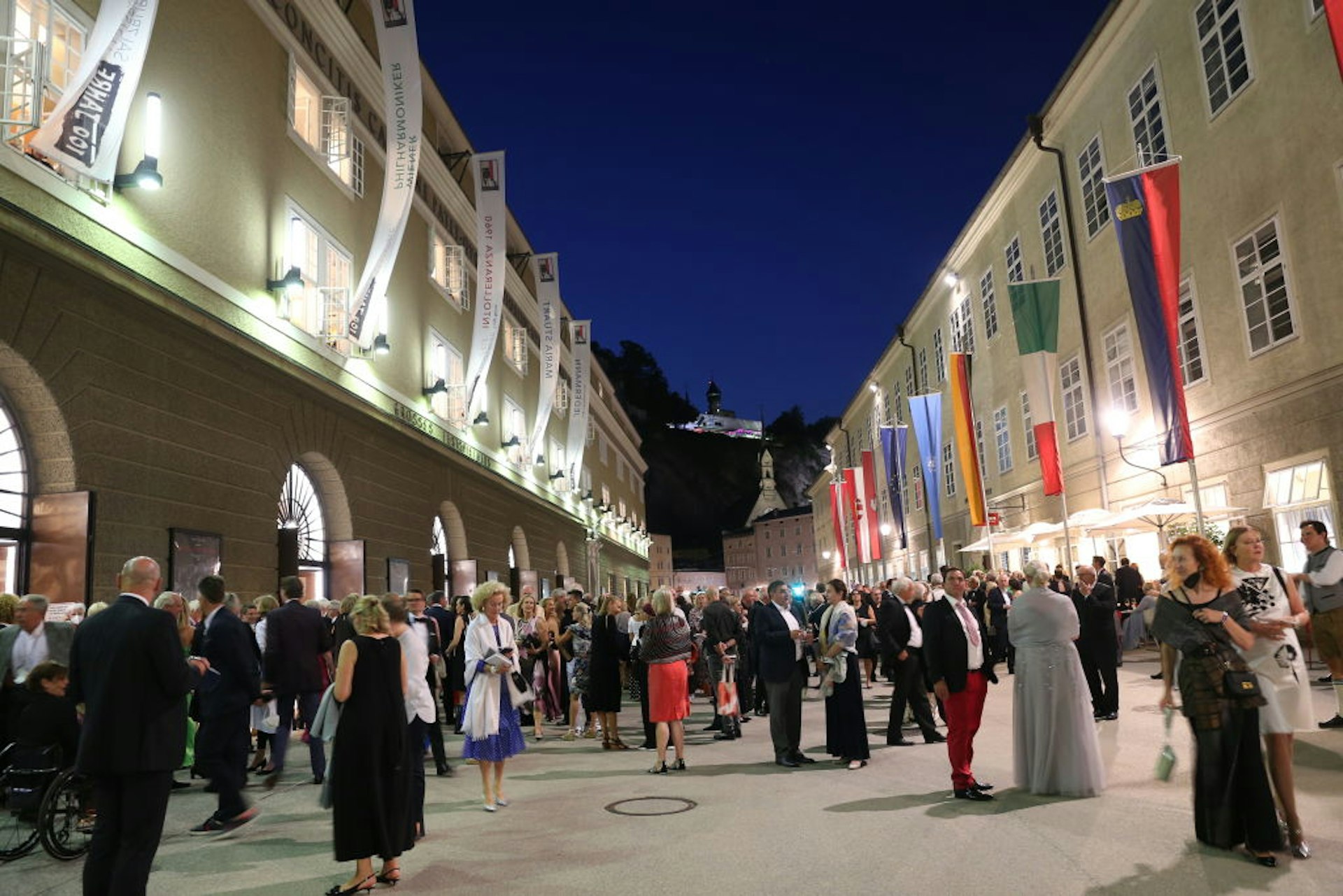
Booking tickets for the Salzburg Festival
An annual tradition since 1920, the Salzburg Festival is the city’s biggest cultural event, as well as one of the world’s greatest classical-music festivals. Since it’s also extremely popular, you should book tickets as far in advance as possible.
While bookings for festival tickets open in January, tickets won’t be confirmed until early April. There is no guarantee until this point that you’ve actually got tickets, since festival patrons have priority, with all other tickets allocated after that. (Note that you won’t have to pay until your tickets are confirmed.) Early April is also when direct ticket sales open – at least, for those few seats still available.
Ticket prices can be extremely high, but you can find cheaper ones if you look for standing tickets or ones with a slightly restricted view – though these tend to sell out fast. Accommodation in Salzburg during the festival (mid July to the end of August) also tends to be booked out or come at a premium – again, book as far in advance as possible.
How to get from the airport to the city center by bus
Buses 2 and 10 run every 10 or 20 minutes between the airport and Salzburg Hauptbahnhof. The journey time is around 20 minutes, and the fare (€2.50/$2.60) is much less than you’d pay for a taxi. Just walk out of the main airport doors, go straight across the car park and the bus stop is on your right. Buy tickets from the machine or from the driver.
Tips for using the Salzburg S-Bahn
Salzburg’s S-Bahn rail network is the fastest way to take longer journeys across the city (for short journeys, walking or taking a bus is more convenient). There are four lines plus one extension that cover the city and its suburbs and even spill over the border into Germany. Trains tend to run every hour, with low-entry doors for wheelchair users; you can even take bikes on them (for an extra charge). Buy tickets from machines at the station.
How to catch a bus or trolleybus in Salzburg
Salzburg is covered by a comprehensive network of bus and trolleybus routes, most of which run every 10 minutes or so during the day and evenings. Buying tickets from the ticket machines at bus stops is cheaper than buying them from the driver (€2.10/$2.20 as opposed to €3/$3.15 for a single adult fare), or you can buy a 24-hour ticket (which you’ll need to stamp on the bus on your initial journey). Bus and trolleybus journeys are also covered by the Salzburg Card.
Finding your way around Salzburg Hauptbahnhof
Most visitors to Salzburg will use the Hauptbahnhof (main railway station) at some point during their stay. You’ll find an ÖBB (Austrian Railways) office where you can buy tickets, as well as ticket machines, an ATM, toilets, a couple of cafes and a very useful Spar supermarket. Escalators lead up to the platforms from the concourse, and there are lifts for step-free access.
The station has two main exits – one opening onto Südtiroler Platz, where you’ll find the local bus and trolleybus station, the other leading onto Lastenstraße, from where it’s a 20-minute walk to the old town.

Bike and e-bike rentals in Salzburg
Salzburg is a great city to explore by bike. Cycle lanes abound (but not on all streets), with dedicated cycle paths alongside both sides of the Salzach and elsewhere. There’s a list of charging stations for e-bikes on the Salzburg Tourist Office website. You can rent a bike or e-bike at several places, including aVelo.
Is Salzburg an accessible city?
Accessibility in Salzburg is generally very good. Most buses have low-entry doors and a ramp for wheelchair users, and at Salzburg Hauptbahnhof platforms can be accessed by elevator. Download the free SalzburgMobil app (for iOS or Android), which has live bus times as well as indications regarding wheelchair access. Traffic levels are low within the old town itself, and while cobblestones are fairly widespread they tend to be relatively unobtrusive.
Many of Salzburg’s museums provide step-free access and are accessible to wheelchair users – though the historic Mozart’s Birth House is not among them, unfortunately. The Tourist Office website has a list of wheelchair-accessible hotels.
What to wear at the Salzburg Festival
Formal dress isn’t required for the Salzburg Festival, but many people do dress up for performances – so bringing something to wear which feels a little more swank than shorts and a T-shirt can be a good idea if you’ve been lucky enough to get tickets.
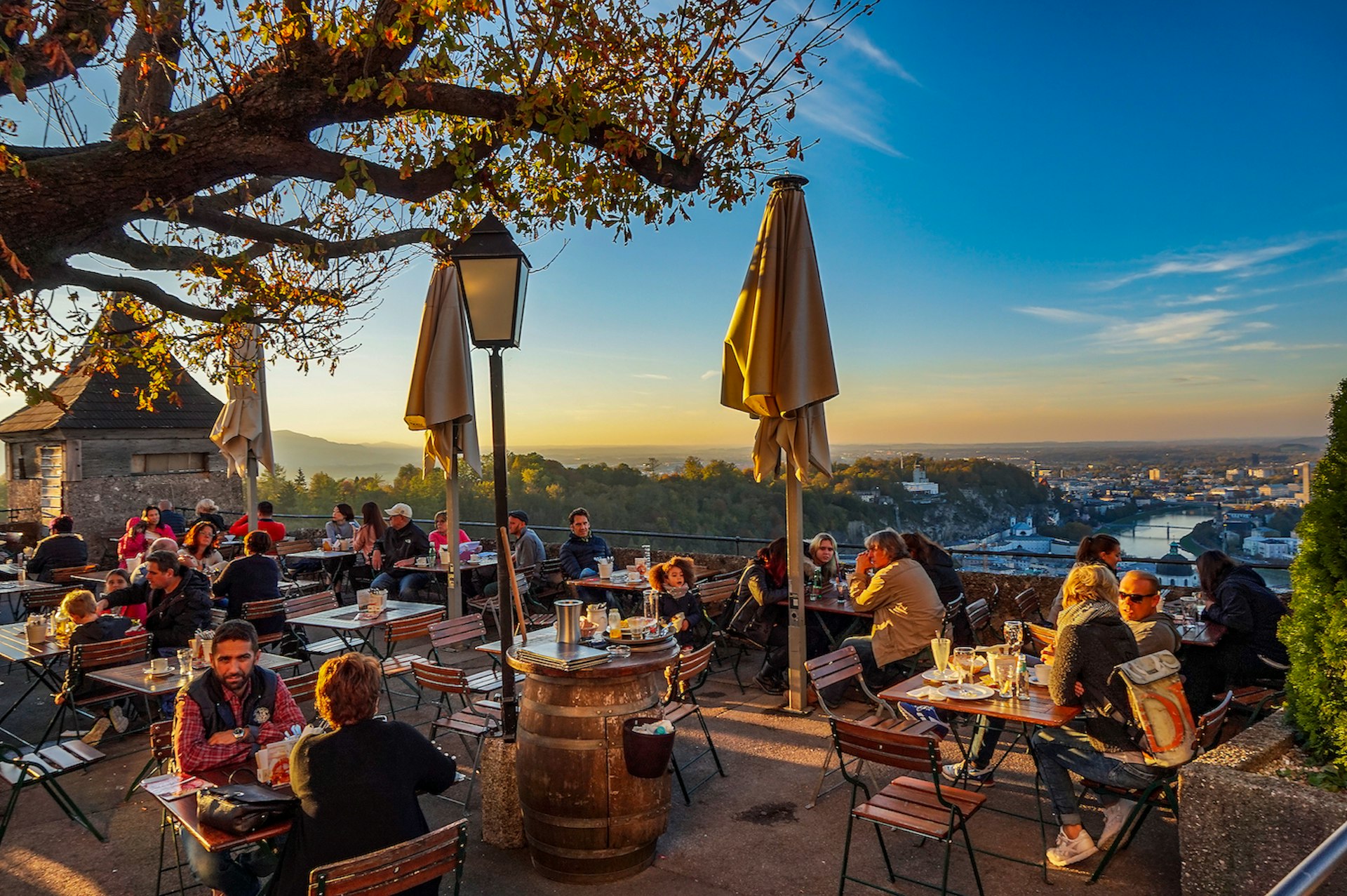
Do I need to tip in Salzburg?
It’s usual to leave a tip in restaurants and cafes in Salzburg and elsewhere in Austria; in fact, not doing so might imply you were dissatisfied with the service in some way. While how much you want to leave is up to you, 10% is a good rule of thumb.
Should you get a Salzburg Card?
A Salzburg Card includes free access to museums and other sights in the city, as well as free use of buses and trolleybuses (though not the S-Bahn), and comes in durations of 24, 48 and 72 hours. Some hotels offer packages that include a three-night stay and 72-hour Salzburg Card – something worth considering when you’re looking where to stay. You can buy the card online, download a digital version on your phone and start using it as soon as you arrive, or pick up a plastic version at the hotel reception or from tourist information offices.
Day trips to Hallstatt and across the Salzkammergut
One of the most popular day trips from Salzburg is a visit to the picture-perfect (and Unesco-listed) lakeside town of Hallstatt and its historic salt mine. It’s easy enough to do on public transport, but popular enough that the following tips will probably prove useful. The 150 bus to Bad Ischl leaves from Salzburg Hauptbahnhof. While you can buy your ticket from the driver, it’s worth getting your tickets online, which means you’ll still get on the bus even if it’s full (which it often is).
At Bad Ischl, take a train going south toward Hallstatt and Obertraun. Hallstatt station is on the opposite side of the lake from the town itself, and connects to a small passenger ferry to the village. There’s a ticket office and ticket machines for trains at the station in Bad Ischl; at Hallstatt train station there’s just a machine, often with a queue. Since you face a fine if you get on the train without a ticket, it’s safest to buy your train tickets ahead of time.
Though Hallstatt is deservedly popular, there are literally dozens of other gorgeous places in Salzkammergut which you can get to just as easily from Salzburg, whether for a swim in a lake, a rewarding hike or epic mountain views.
Is Salzburg safe?
Austria has one of the lowest crime rates in the world, and Salzburg is a very safe city to travel in. Nevertheless, use common sense and take precautions as you would in any other city. Don’t leave bags open or unattended, avoid leaving your wallet or camera on the table at a cafe and so on.
In case of an emergency...
We hope you never need to consult this section. But if you do need emergency services anywhere in Austria, call 112 (the European Emergency Number, which you can also call from a locked phone). An operator will then direct you to the relevant emergency service.
You can also call the emergency service you require directly: the police by dialing 133, an ambulance at 144, an emergency doctor at 141, fire services at 122, mountain rescue at 140 and traffic emergencies at 120.

